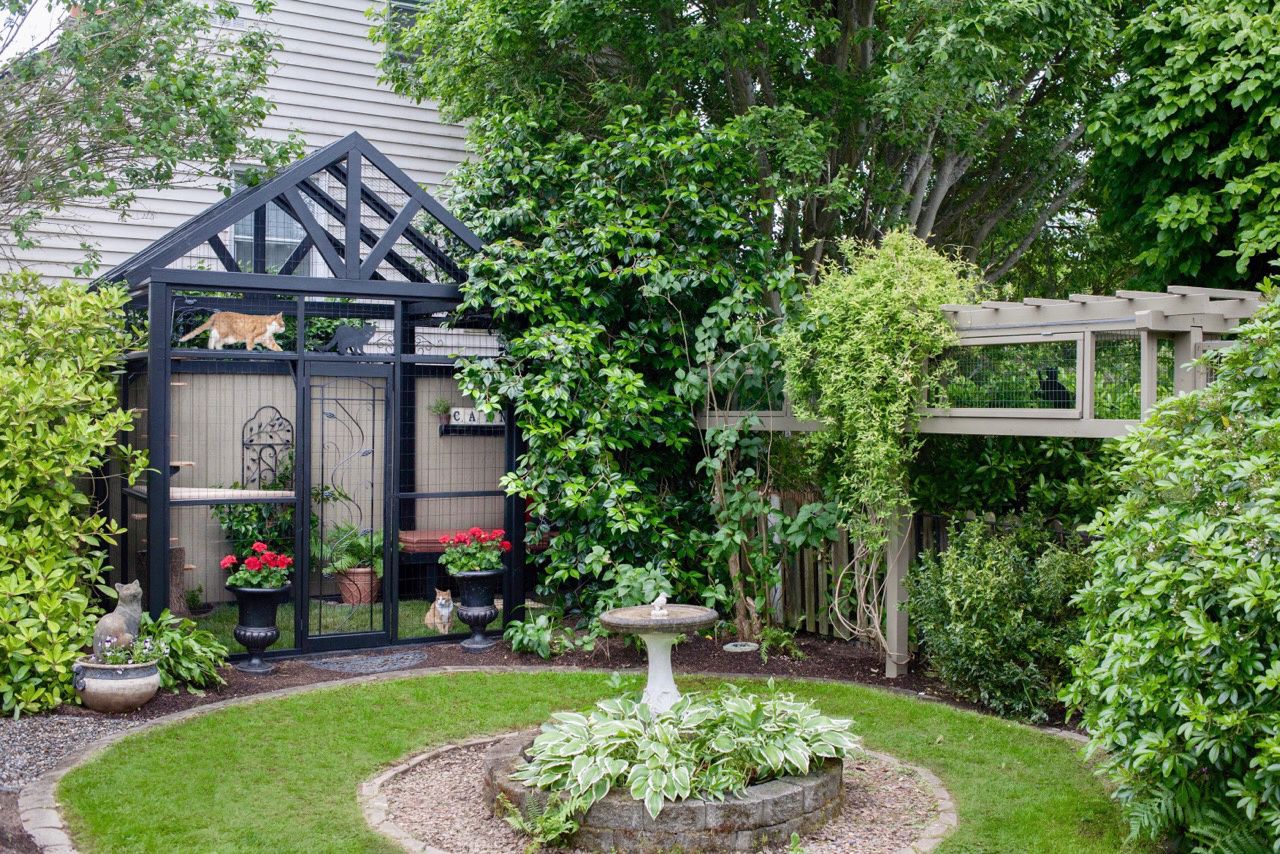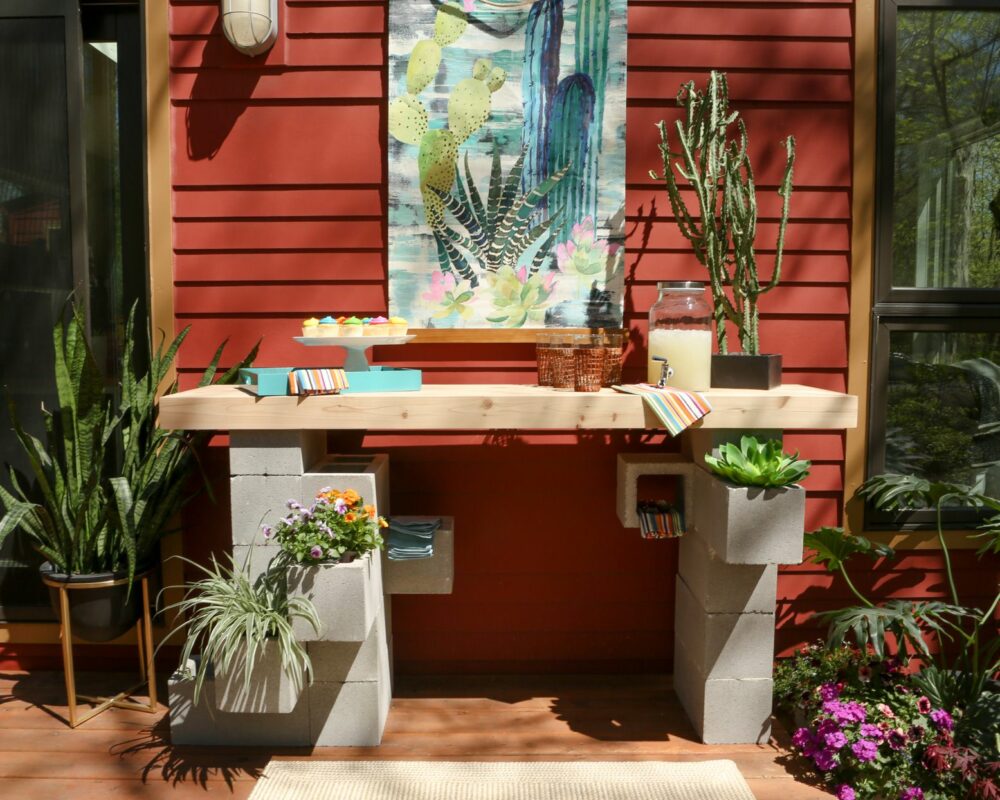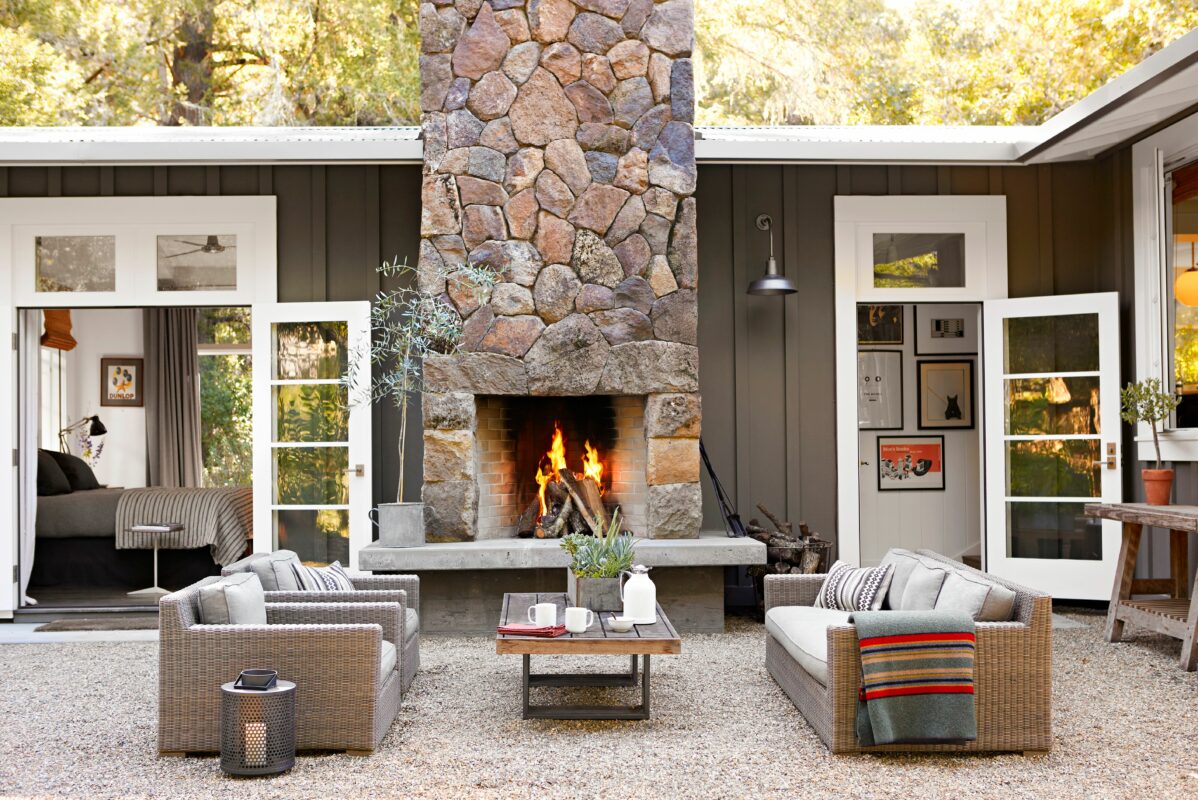If you have a cat who sits by a window staring at the outside world, consider this new home trend. Searches for catios—enclosed outdoor spaces where cats can exercise, enjoy fresh air, and bird watch safely—have increased on Google Trends by 330% since the end of 2023. And according to TaskRabbit, a service that assists people with household projects, requests for help with catio builds increased 44% from 2022 to 2023.
“Cats can be affected by stress, and one of the ways to help decrease stress is through stimulation and playtime. These outdoor pens can significantly enhance your cat’s quality of life, providing both physical and mental health benefits in a safe and controlled environment,” says Dr. Brittany Scott, DVM, a veterinarian at VCA Ho-Ho-Kus Animal Hospital. “As for other benefits, I see a lot of indoor cats who are overweight—catios can provide extra space for them to roam and stay in shape.”
A catio can be an essential part of a cat’s well-being, especially when they’re able to engage in natural behaviors such as scratching and stalking. “These enclosures also protect birds and wildlife from a cat’s hunting instinct and provide a sense of peace for cat owners as they know their cat is safe outdoors,” adds Cynthia Chomos, designer and founder of Catio Spaces.
Ahead, experts answer all your questions on how to create the purr-fect catio.
Catio Spaces / Cynthia Chomos
Catio Designs
Catios can be a standalone structure in a yard or garden (or on a patio or deck) or be attached to the outside of a window or house. “Connected catios usually have an access door allowing a cat the freedom to go outside whenever they desire,” says Yvette Bacha, co-owner of Hellas Custom Catios and co-author of Catio Building Tips for the DIYer.
“Catios allow cats to play and have fun in a different environment with new surfaces, textures, sounds, and smells,” says Stephanie Brown, a pet expert at Chewy. “You can even add some of their favorite toys to amp up the fun and familiarity of playtime.”
How to Choose the Right Catio
The catio you select will depend on the amount of available space in your yard, your cat’s energy level, and your pet’s age. “Each type of catio has its own pros and cons,” says Chomos. “A catio attached to the home, for example, eliminates the risk of a cat escaping from an owner’s arms while traveling to a standalone structure out in the yard.”
It’s important to design your catio to suit your cat’s energy levels, physical abilities, and personality. “Some cats are bush dwellers and stay low to the ground, while others are tree dwellers who prefer to be high up to watch their kingdom,” adds Bacha.
Where you build a catio depends on the real estate you’re willing to share with or give up for your feline, and the suitability of that space. “Cats love warmth, so an area that offers sun to partial shade is ideal, while a location with stimulating and expansive views near outdoor family activities provides endless hours of cat enjoyment,” says Chomos.
Building a Catio vs. Buying a Pre-Made Option
Cat owners can hire a local contractor to create a custom catio, purchase online kits that require assembly, or order a blueprint and DIY a catio themselves.
A few popular catio kit options:
Catio Spaces / Cynthia Chomos
Catio Building Materials
In general, catios are made using galvanized wire, polycarbonate mesh, and rot-resistant wood. “The wood can be painted or stained to complement a house, but it’s important to use pet-friendly products,” says Chomos. Catios can also include wood shelves and stairs for vertical and horizontal movements, carpet-covered perches and stumps, and flooring including grass, decking, and pavers.
You’ll also want to consider your environment when designing your catio. “For example, if your area gets a ton of snow, you’ll need to employ a sturdy roofing material. If you have snakes in your yard, a catio built above the ground with smaller mesh openings will prevent snakes from entering,” says Bacha.
Catio Spaces / Cynthia Chomos
How to Choose a Catio to Suit Your Home’s Style
The way you design and decorate a catio should be a reflection of your home’s overall look and feel. “For example, if you have a small cottage with little to no yard, you may want to opt for a box-style catio that extends off a window, where you can add scalloped trim or a trellis accent to match your home’s quaint charm,” says Brown.
“Gable roof catios look great with Cape Cod, Craftsman, and bungalow-style homes, whereas a shed-style roof complements Colonial, ranch, and contemporary-style homes,” says Chomos, who adds you’ll also need to consider things like the color. “You can match the hue of your catio with your home and/or landscape, or you can add contrast with a different shade of color.”
Catio Spaces / Cynthia Chomos
How to Decorate a Catio
One of the joys of owning a catio is getting the chance to decorate the space. Think bedding, cubbies, scratching posts, and pet-safe plants. Designs can even include cat trees and kitty hammocks. “I advise my clients to also embrace human elements like an outdoor rug, a comfy chair, a bench, pillows, cat art, water features, and lighting,” says Chomos. “Shades can be incorporated if the catio is in direct sunlight.”
Bacha suggests including different textures for the floor, such as large rocks, paving stones, and natural grass to excite a cat’s senses and challenge their balance and abilities. “Remember to keep any lighting set to low at night as bright lights can be blinding to a cat’s eyes,” she adds.
Mistakes to Avoid When Building or Designing a Catio
Common errors include not creating an escape-proof structure, using inappropriate materials such as vinyl-coated wire and artificial grass (choking hazards), incorporating a full-shade roof (as cats love the sun), and putting out food (which will attract critters).
Not providing enough ventilation in warm weather or protection when it’s cold outside are also considered missteps. It’s important to provide a shaded spot in warmer climates along with things like cooling mats and portable fans to keep air flowing throughout. “For cooler and rainier climates, use straw as flooring, add layering to the walls, and include cozy blankets, heated beds, and warming mats to keep your cat warm,” advises Brown.
“You’ll also want to build a catio close to your house so you can see and supervise your cat, especially if there are coyotes, bears, or other predators in the area and keep in mind the needs of senior and sight- or mobility-challenged cats by including ramps, railings, loop-free carpets, heating pads, and soft landings to support their comfort and movement,” advises Chomos.
How much does a catio cost?
Pricing can vary widely, from $100 up, depending on whether you decide on a custom build, purchase a premade kit, or order a DIY blueprint and build one yourself. “General cost considerations include the size, materials, building location, design, and decor,” says Chomos. “Custom catios can cost more depending on the complexity of the structure.”




